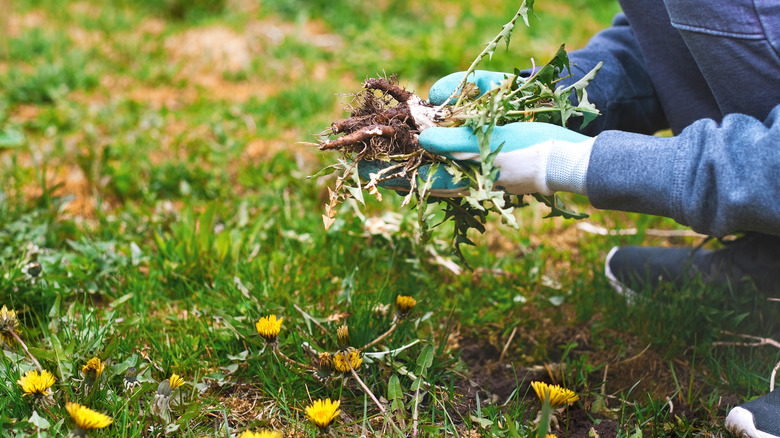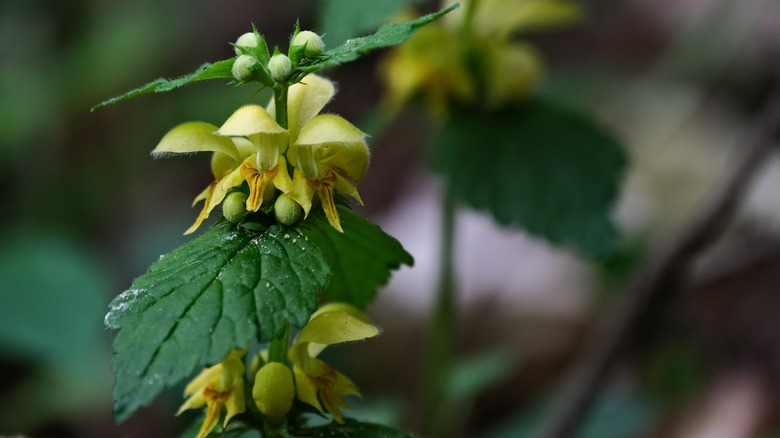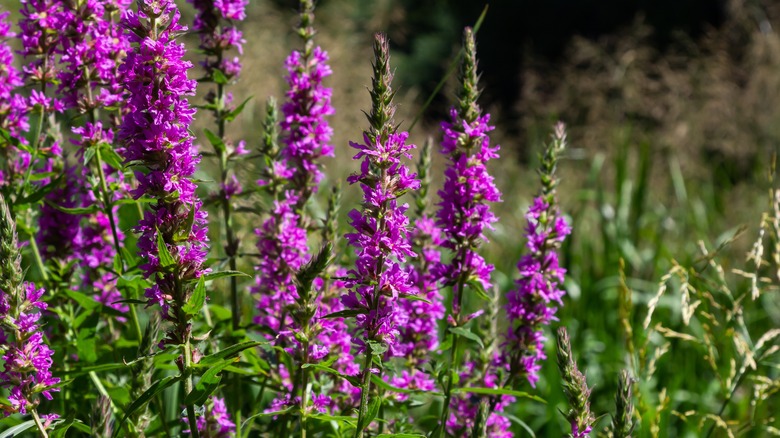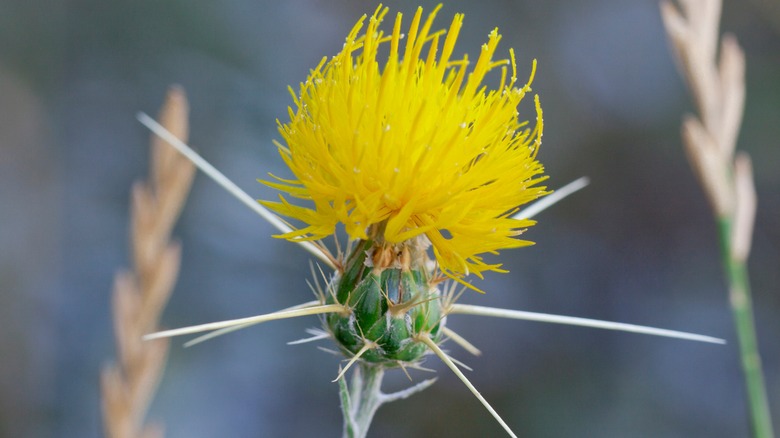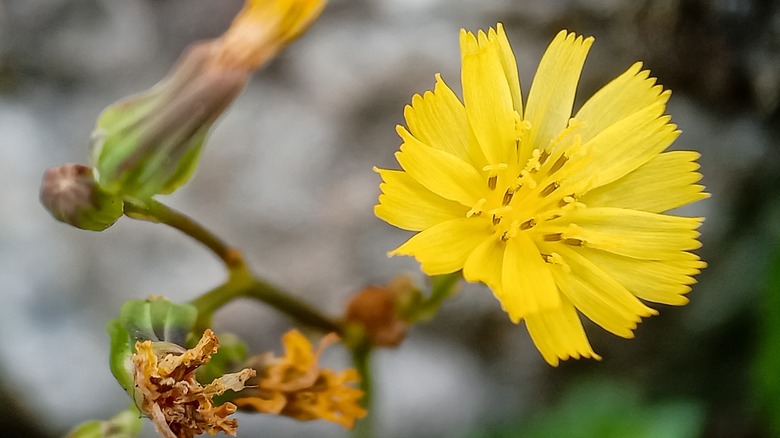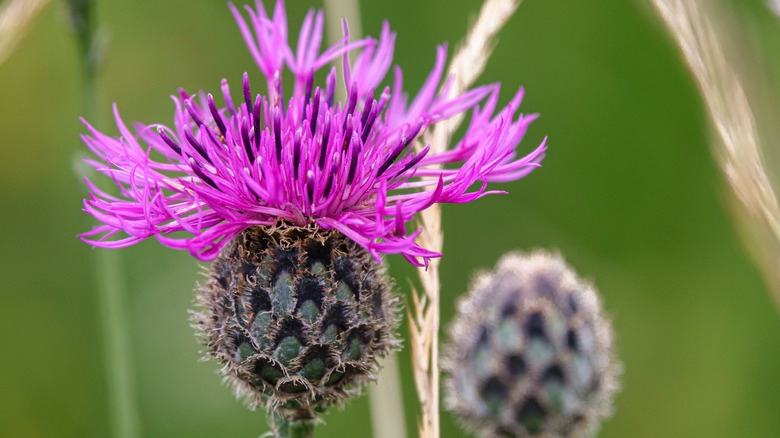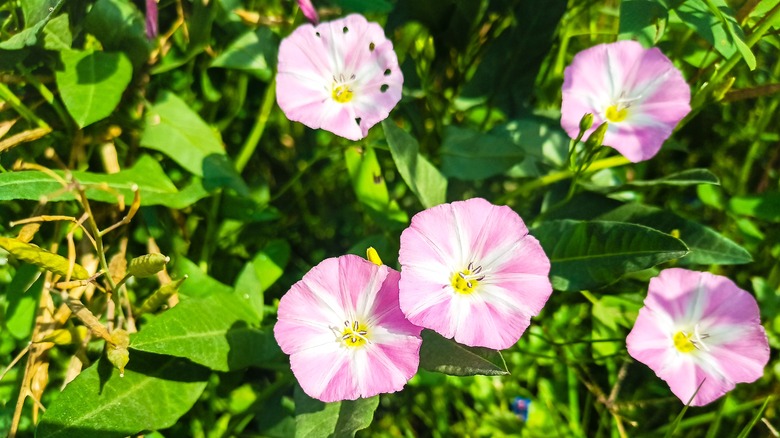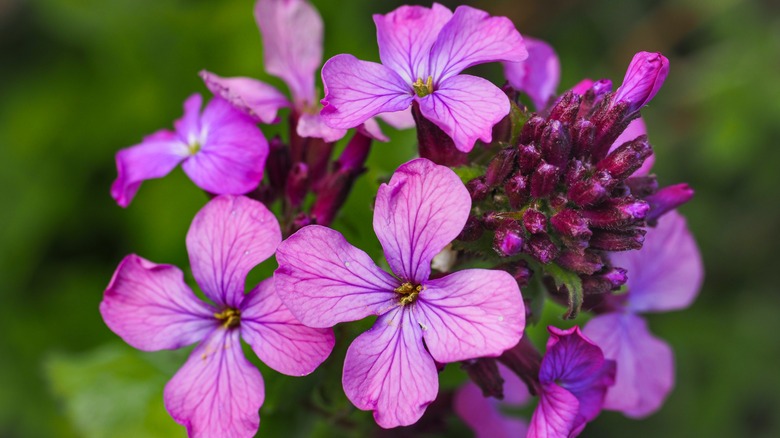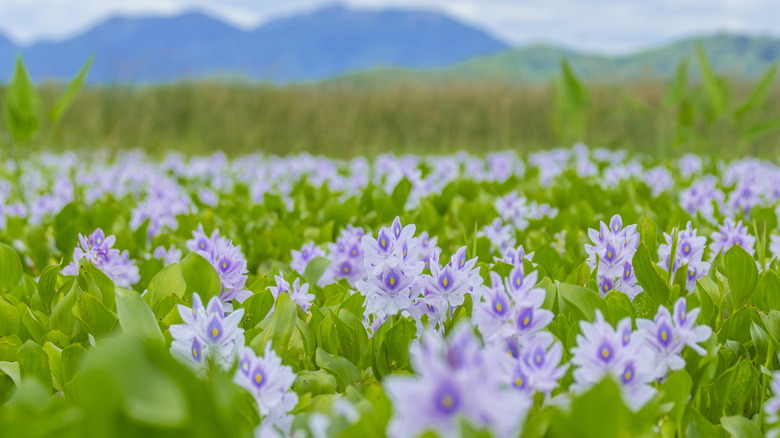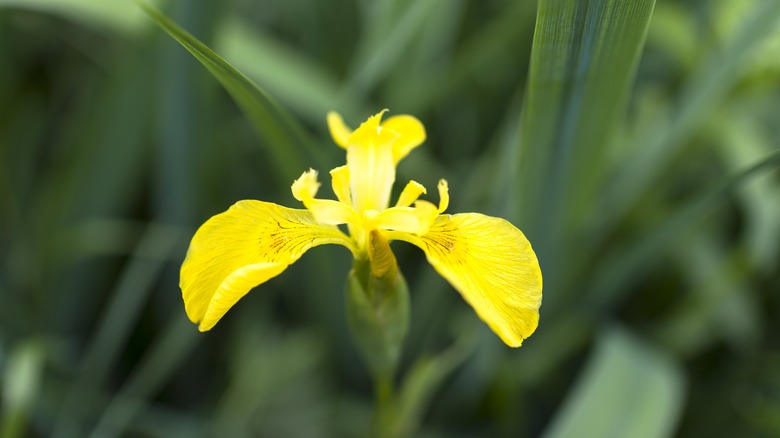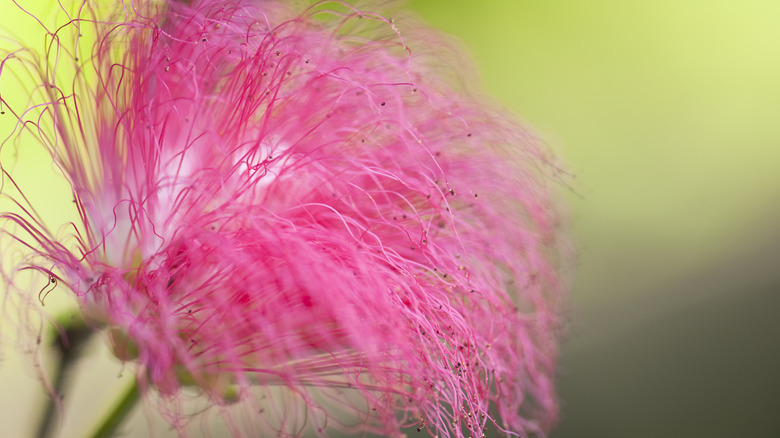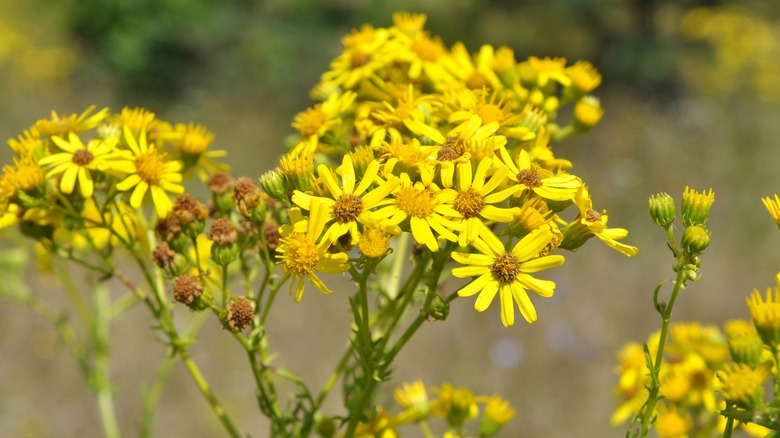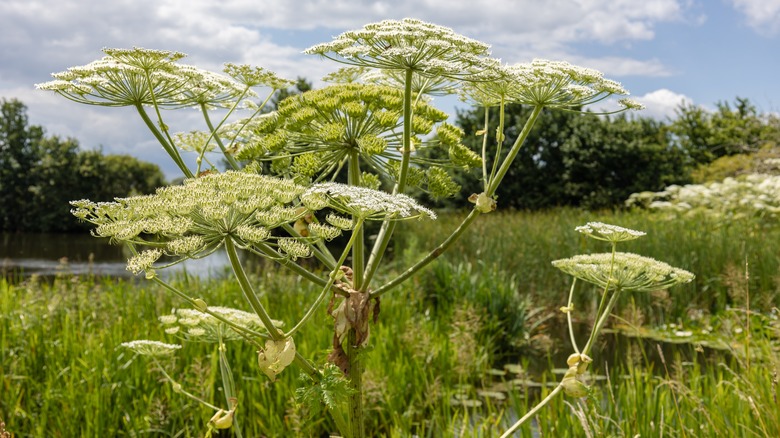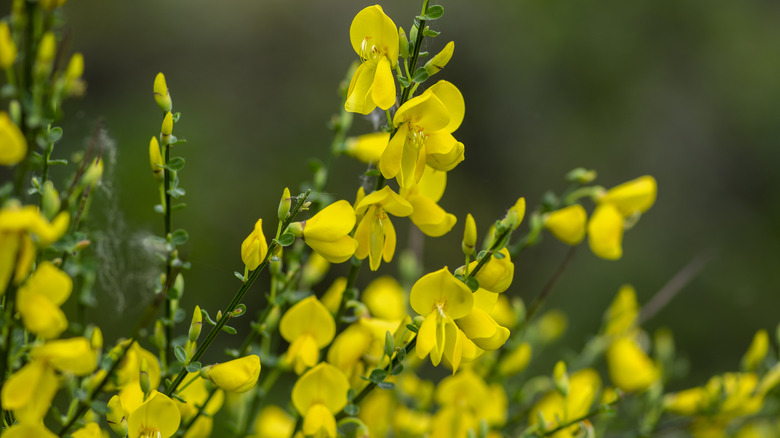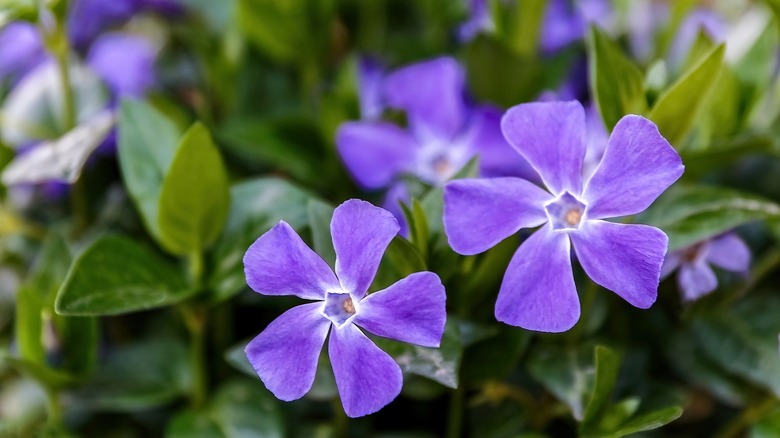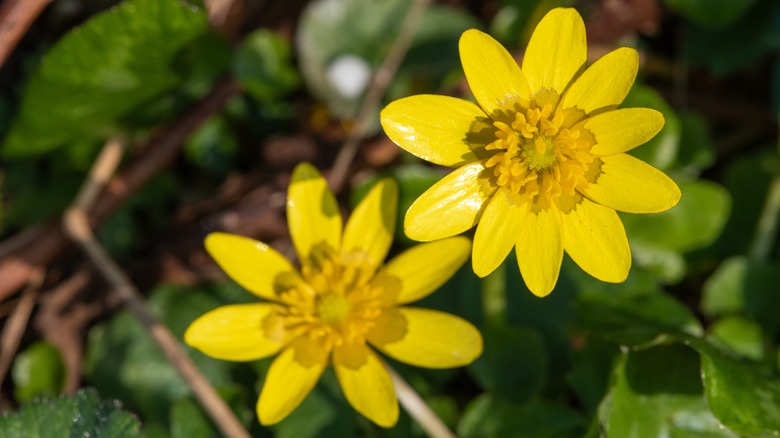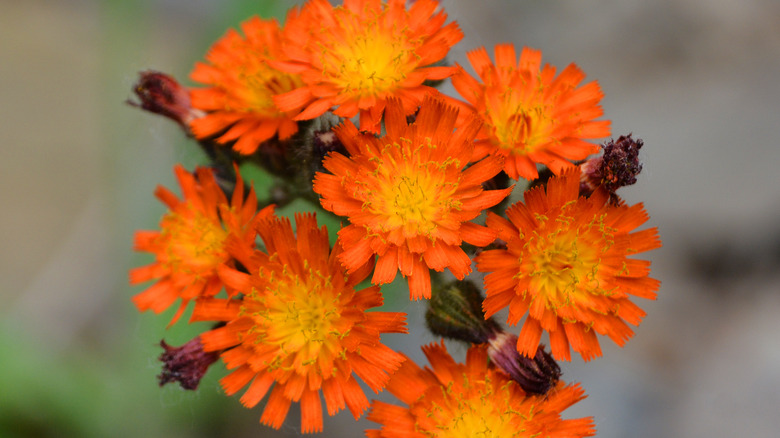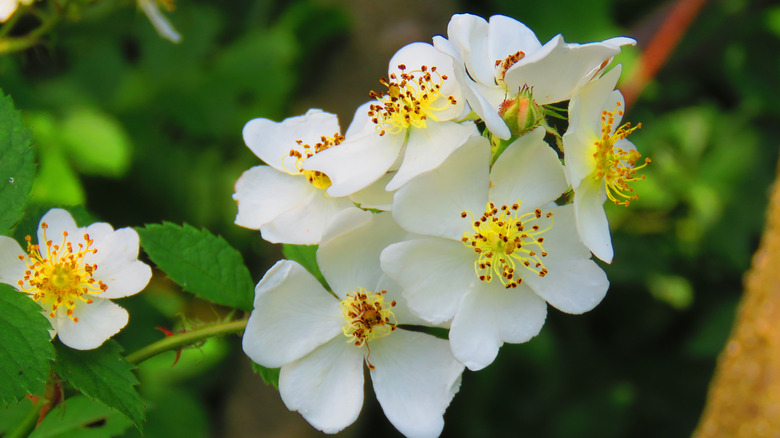Don't Mistake These Deceiving Invasive Weeds For Flowers
Have you ever walked into your garden and admired a stunning plant before thinking, "Wait, I don't remember planting that"? It happens, and oftentimes that new blooming stunner is actually a weed. Not all weeds are inherently bad, but you must take caution to identify what type of plant it is. At first, you may be tempted to leave it in your yard, but it may be an invasive weed that could cause major damage to your garden. It could also be detrimental to the environment with outcomes such as decreased plant diversity, poor water quality, and damaged animal habitats.
That's why invasive weeds should always be removed, even if they are the prettiest plants in the bunch. They compete for water, sun, and nutrients with native plants, which causes problems not just for your garden but the ecosystem at large. If native plants die out, animals who use them for food and shelter could die as well. Keep in mind that a plant considered invasive in one region or even state does not mean it's considered invasive everywhere, as it depends on your area's regulations. Not sure if you've got a friendly wildflower or a dangerous weed? Check out our guide to help you identify and remove 17 invasive weeds that could wreak havoc on your garden and regional plant life.
1. Yellow archangel (Lamiastrum galeobdolon)
One weed that's easy to confuse for a wildflower is the yellow archangel. It's characterized by its hooded yellow flowers and deep green leaves that resemble serrated spearmint, which makes sense since it's part of the mint family. Yellow archangel is native to Eurasia but was introduced to North America where it is now considered invasive and is a noxious weed in Washington state. Unfortunately, manual removal is not effective because the root system breaks apart and can be rerooted. If you want to avoid herbicides, try covering the plants with mulch or newspaper.
2. Purple loosestrife (Lythrum salicaria)
Purple loosestrife may easily be mistaken for hyssop, liatris, or lupine from afar, but it's actually a wetland invasive weed. To tell whether or not you're dealing with purple loosestrife, wrap your fingers around the stem of the plant — if it is square-shaped, you likely have loosestrife. The flowers are beautiful, which is why the plant was brought over from Eurasia in the 1800s, but this weed is aggressive and threatens many North American wildlife habitats. Luckily, you can physically remove these weeds somewhat easily, then bag or burn them to prevent further spread.
3. Yellow starthistle (Centaurea solstitialis)
In addition to rapid growth that edges out native plants and consumes natural resources, yellow starthistle can actually release chemicals into the soil that harm other plants, inhibiting them from growing in the area. Yellow starthistle is generally considered invasive but is especially potent in dry, Mediterranean-like climates. To identify this weed from other yellow flowers, look for a tuft of petals, a prickly flower head, and jutting yellow spikes surrounding the base of the flower. To eliminate yellow starthistle from your yard, try a combination of weeding, digging, and mowing.
4. Wild lettuce (Lactuca serriola L.)
Wild lettuce also goes by the name prickly lettuce, but this invasive species should not be consumed. The white oozy substance it contains can be toxic to wildlife and damage wheat crops. Each plant can distribute up to 100,000 seeds, so it's incredibly efficient at spreading over a large area. While identifying wild lettuce is easy before it blooms, in the late summer it produces a flower that looks like a calendula or daisy. To remove wild lettuce, pull it up from the root while wearing gloves, using a shovel if needed.
5. Spotted knapweed (Centaurea maculosa)
Spotted knapweed can look like the beloved bee-friendly Rocky Mountain bee plant's fuschia flower, but this is not a plant you want to keep in your garden. To quickly identify if you have spotted knapweed, look at the base of the bloom. If you see a tiny egg-shaped prickly bud, you have knapweed. To get rid of it in its early stages, ensure each part of the root system and any fallen seeds are gathered. However, if the infestation is widespread, you may need to use herbicides.
6. Morning glory (Convolvulus arvensis)
Morning glory or bindweed has a deceptively pretty name for an invasive weed. Not to be confused with the benign Ipomoea, which also goes by the name morning glory, this weed can easily be confused for a petunia, but it wreaks havoc on wildlife. The extensive, sprawling root system makes it impossible to manage and takes resources away from both wild and agricultural plants and crops. You can either cover the garden the bindweed has taken over with fabric or mulch to deprive it of light and resources or manually remove each root of the plant.
7. Dame's rocket (Hesperis matronalis)
Dame's rocket is an invasive species to North America that originated in Eurasia. It produces stunning flower clusters that can easily be mistaken for phlox, a native flower family. The best way to tell the difference is by the number of petals: phlox flowers have five petals, while dame's rockets only have four. Along with being considered an invasive plant across much of North America, it is also a noxious weed in Colorado, Connecticut, and Massachusetts. Luckily, you can pull this weed out manually and then put the remnants in a bag to prevent spreading.
8. Water hyacinth (Eichhornia crassipes)
Originally from South America's Amazon, water hyacinths are water-growing plants that are listed as invasive and are especially prevalent throughout the north and southeast coast of North America because they thrive in freshwater environments. These plants are beautiful but shouldn't be used in your backyard pond, as they spread quickly to form thick mats over water which can deprive underwater life of sunlight. Perhaps even worse is that these plants are much-loved habitats for mosquitoes. If you have water hyacinth in your yard, try to remove it physically or use herbicides.
9. Yellow iris (Iris pseudacorus)
Ever spotted a group of daffodils near your pond that you don't remember planting? You probably have yellow iris blooms on your hands. To identify the differences, note that the yellow iris has three sepals and three petals in staggered sizes, which look wilted compared to a daffodil's six perky petals and signature trumpet cup. These weeds grow in tight clusters, crowd out other native species, and are toxic to animals. To remove them, use a combination of cutting, weeding, and herbicides. The rhizomes can cause skin irritation, so wear skin-protective gear.
10. Mimosa or silk tree (Albizia julibrissin)
The best way to identify the mimosa or silk tree invasive weed is by its vibrant flowers, which have the texture of fringed thread or ostrich feathers. This plant attracts many pollinators and luckily isn't considered invasive in all parts of North America. However, it is particularly prevalent in southeastern states such as Georgia, Florida, and South Carolina. If found in the states that consider it invasive, it should be removed by taking it up from the root, though you may also need to use a chemical herbicide to ensure it doesn't grow back.
11. Tansy ragwort (Jacobaea vulgaris)
While tansy ragwort belongs to the same family as the common daisy (Asteraceae) and even looks very similar, this European-born invasive species must be removed, especially if animals or livestock have access to it. Tansy ragwort is not just invasive but is also toxic and can make animals ill or even kill them if consumed in large-enough quantities. Luckily, you can usually control tansy ragwort growth by manual pulling. If the plant is flowering, be sure to remove and destroy the flower heads even after uprooting it or the plant will continue to distribute seeds.
12. Giant hogweed (Heracleum mantegazzianum)
Giant hogweed might not seem dangerous at first, especially because its umbrella flowers look like white yarrow plant or Queen Anne's lace. However, it's considered invasive partially because it is non-native but largely because its sap is highly toxic to people, causing painful burns and scarring. This trait has earned it a spot on the federal noxious weed list. It's easy to tell apart because it can grow up to 14 feet tall. During removal, to avoid possible contact, use a shovel or an herbicide instead of removing by hand, even if wearing gloves.
13. Scotch broom (Cytisus scoparius)
The scotch broom is a member of the pea family and native to Europe. Brought to North America in the 1850s as an ornamental plant, it was later used to control erosion on the sides of highways. However, because it can crowd out other plants, it was put it on the invasive weed list. Additionally, it's toxic to animals and can make them ill if consumed in large quantities. To remove this weed, cut down stems on older shrubs and manually remove younger ones. Monitor the area in the months following to protect against any regrowth.
14. Periwinkle (Vinca major)
You may have seen the stunning periwinkle flower in garden beds around Europe and Africa and asked yourself, "why don't we plant these in the United States?" The reason is because they are highly invasive. Periwinkle produces violet flowers along with dense stems and leaves that crowd out other plants as well as deprive them of necessary resources. Luckily, removal can be as simple as thorough weeding as long as the infestation is small enough. Regrowth can occur even from small broken pieces of stem, so be sure to clear the area after weeding.
15. Lesser celandine (Ficaria verna)
Lesser celandine is a member of the Ranunculaceae family along with its non-invasive lookalike buttercups. It can be difficult to tell these two yellow flowers apart at first glance, but lesser celandine usually has eight to 12 waxy petals, while buttercups only have five. Lesser celandine is an invasive plant because it reproduces rapidly through underground tubers and forms a forest blanket, suppressing other native plants. If you have a small infestation, remove the tuber roots manually. If you have a denser mat, you may need to mow over the area periodically or use herbicides.
16. Fox-and-cubs (Pilosella aurantiaca)
From afar, fox-and-cubs flowers, also known as orange hawkweed, may look like marigolds. Unlike marigolds, this invasive plant has rectangular, frayed petals. Alas, these cutely-named, orange-hued flowers are bad for North America. The plant is able to form dense mats, reproduce at a breakneck pace through seed spread and roots, and win out in contests for light, water, and space against native plants. Remove the plant through careful digging and weeding, ensuring the root system comes up entirely. All flowerheads should be bagged securely and thrown out.
17. Multiflora rose (Rosa multiflora)
You can find the multiflora rose just about anywhere including in forests, prairies, wetlands, and even between highway medians. That's because this pretty flowering shrub can survive in many soil types and conditions. The clustering flowers with yellow centers can be confused for pasture or swamp rose. Unfortunately, despite its beauty, it's considered an invasive species in 41 states. Similar to other invasive shrubs, it grows in tight, branch-knotted clumps that are difficult to penetrate. To remove this weed, try pulling the plant out by the root, as well as regular mowing and clipping.
